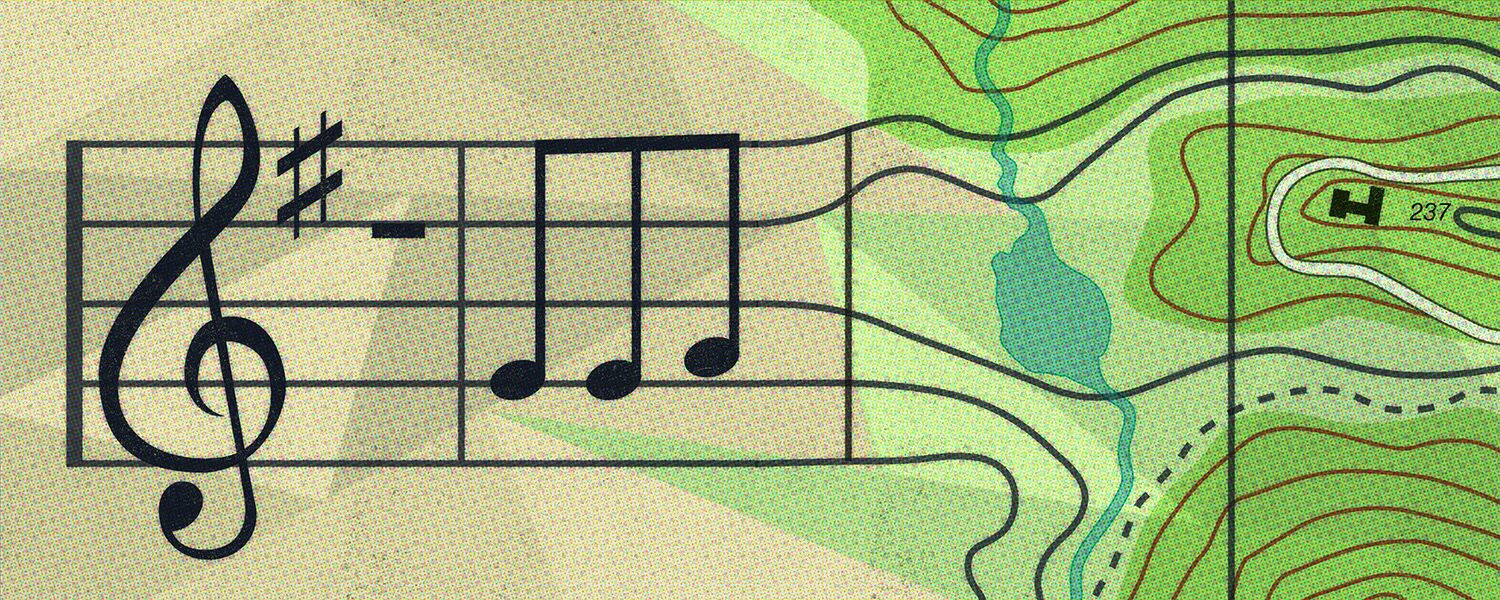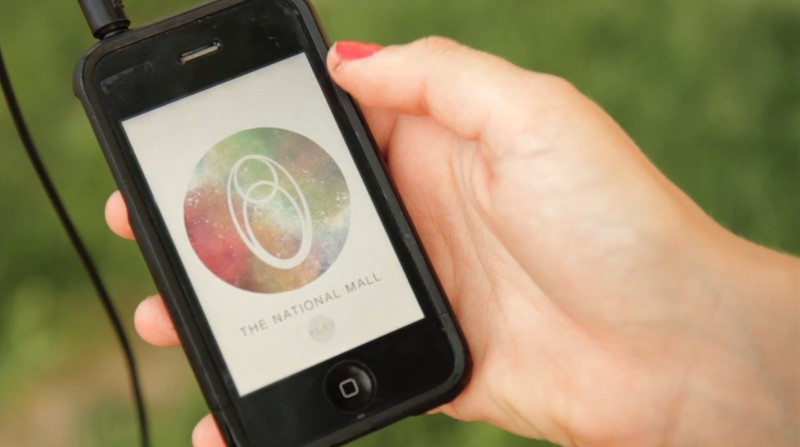

Next time you’re watching the news and see reports of airstrikes in Syria, it’s worth remembering that the country isn’t just a war zone. It’s also the home of a multitude of ancient cultures, along with the world’s oldest song.
About 3,400 years ago, a port city called Ugarit stood in what is now the northwest of the country, near the Mediterranean coast. With its position guarding the inland trade routes to the Euphrates and Tigris Rivers, it’s believed to have been a bustling metropolis–and when archaeologists in the 1950s were excavating its royal palace, they found a collection of clay tablets.
On several of the tablets, inscribed in the ancient writing system of cuneiform, were the Hurrian songs. They number about 36, but only one is complete–a hymn to the Ugaritic fruit goddess Nikkal. It’s the oldest surviving work of notated music in the world. You can listen to it here, performed on the lyre by Michael Levy.
Since the “Hurrian Hymn” was composed, however, things haven’t changed much. What we call a song is still a bunch of lyrics set to a piece of music with a beginning, a middle, and an end. Sure, we use different technology today–we’ve upgraded from cuneiform to GarageBand–but the song, as Led Zeppelin once sang, remains the same.

It doesn’t have to be that way
Our songs are trapped in time. They’re chronologically fixed. Even “Longplayer”–a piece of music written by Jem Finer that’s designed to last for one thousand years–has an ending. Why? What’s so great about time that music has to have a duration?
I’m not saying that music should never stop (sorry, Rihanna). If that’s what you want, then maybe try Paul Lamere’s Infinite Jukebox–an algorithm that looks for areas of similarity throughout a song and jumps between them seamlessly so that the music loops forever. It’s fun in theory, but after 30 minutes of the Infinite Jukebox’s version of “Ignition (Remix),” your ears will be begging you for mercy.
No. What I’m interested in is freeing music from the time axis and putting it on another axis instead. How about instead of a song playing out over time, it plays out over a space? Instead of a duration, it would have an extent.
That might sound a bit confusing, so let me give you an example. Imagine visiting the National Mall in Washington, D.C.–specifically, the huge obelisk of the Washington Monument. You’re wearing headphones, and as you make your way through the area surrounding the monument, you begin to hear instruments tuning up.

As you get closer, the tuning noises fade out in favor of a mellotron playing a simple melody. Approach further, and violins and a choir join in. When you finally reach the top of the hill, there are drums, a full orchestra, and even the sound of fireworks, which keep playing while you stay at the base of the monument. When, eventually, you descend, you go through those stages again in reverse
Sounds cool, right? Well, it already exists. A pair of brothers named Ryan and Hays Holladay built it back in 2011, and then went ahead and created even more complex geographical music experiences in New York’s Central Park and downtown Austin, Texas. Go to any of those places today, armed with an iPhone and a pair of headphones, and you can listen.
Ryan explained more in a TED talk in 2013:
“The architecture of the landscape is intrinsic to the listening experience. This is not a playlist or a list of songs intended for the park, but rather an array of distinctive melodies and rhythms that fit together like pieces of a puzzle and blend seamlessly based on the listener’s chosen trajectory. You can think of it as a choose-your-own-adventure of an album.”
The issue with the Holladays’ location-aware music apps is that they’re too exclusive. I’m not talking geographically–the fact you can only listen to the Central Park album in Central Park is the whole point. The problem is instead technological–you can’t listen to the music if you don’t own an iPhone, and the albums will disappear when the App Store is eventually replaced by whatever comes next. That seriously sucks. Music should be for everyone, forever.
Back in 2011 I asked the Holladays if they’d consider, for those reasons, making the tools they used to create their geographical music more widely available. They said that was something they were interested in, but almost five years later that hasn’t happened–probably because, after a bit of sleuthing, it seems they actually paid a New York-based software developer, Bradley Feldman, to make the app for them.
So how about we create a more inclusive version of that technology that’s free and simple to use? One that works across any operating system, as long as you’ve got a smartphone with a GPS chip (which are ubiquitous today across every continent). One that’s future-proof and won’t disappear if a single technology fades from popularity. One that’s open source and accessible to all.

Here’s how I envision it working:
- A musician creates a series of loops of different instruments. We’ll call these stems. The stems can be any length, but probably the longer the better (this is the one part of the process where time is inescapable, for reasons of tempo).
- The stems will need to sound OK when played over the top of each other, but given that the component tracks of a normal song have to do that already, I don’t think that’ll be a major challenge.
- The musician then uploads those stems to a website and can associate them with areas drawn on a map. The stem will only play inside that area, and will fade out when the listener leaves it. Perhaps the areas would need to have a maximum size to prevent abuse.
- The stems are also tagged with a name for the project, a bit like songs normally appear on an album. That project can be made public–so anyone can find it for free–or private–so a password or microtransaction is required to listen.
- The listener goes to a location and opens an app. It determines his or her location and displays all the music available in that location.
- He or she picks one and explores it by walking, cycling, or driving around. Some pieces will suit some modes of transportation better than others, depending on the size of the areas that the stems are tied to.
- Visitors can listen as long as they want. When they’re finished, they either close the app or leave the area.
Pretty simple, right? But incredibly powerful across every genre. You could listen to rappers telling the stories of the areas where they grew up, EDM artists soundtracking nocturnal highway drives, or ambient musicians exploring the contours of a forest or mountain range.
It scales, too. Cities would fill quickly, and artists could either compete over having the best song in a popular area or the only song in a place that’s hard to get to. Stories would spread about an incredible piece of music that’s only accessible for listening on a distant mountaintop or in the middle of a lake. Curators would emerge to take you on a tour of an area’s best music. Real, emotional journeys.
Down the line, the concept could incorporate other factors beyond geography, enabled by wearable sensors, public APIs, or big data feeds. Weather, temperature, phase of the moon, heart-rate, speed, traffic, crime rate, even device battery status. Can you think of more? The possibilities are almost endless.
But location is clearly the best place to start. It’s simple to code, accessible to a huge audience around the world, and people already strongly associate music with experiences.
So, let’s do it, yeah? Let’s redefine what a song can be, together. I’m not much of a coder, but if you are, or if you have any nice ideas on how this could be done more effectively than the above, then get in touch. Email me at radio.edit@gmail.com.


How We Get To Next was a magazine that explored the future of science, technology, and culture from 2014 to 2019. This article is part of our Fast Forward section, which examines the relationship between music and innovation. Click the logo to read more.
